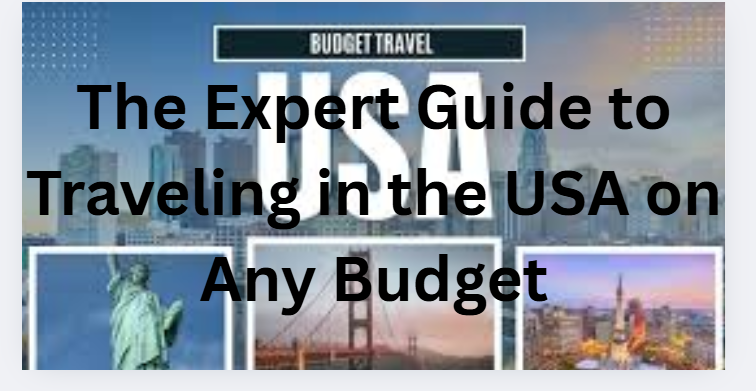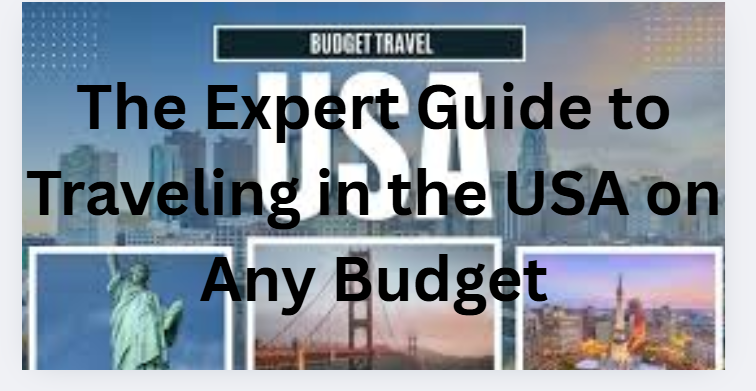
Let’s get one thing straight: the idea that the United States is too expensive to travel is a myth. Sure, you can drop a fortune on five-star hotels and fancy dinners, but you can also have an incredible, life-changing adventure without breaking the bank. The secret isn’t having a massive wallet; it’s knowing how to shift your mindset and make smart choices.
This guide isn’t about being cheap. It’s about being resourceful, so you can stretch your dollars further and experience more of what this vast country has to offer, whether you’re a backpacker, a family on a mid-range trip, or someone looking to splurge wisely.
Shifting Your Travel Mindset
Before we talk numbers, let’s talk mentality. Traveling the USA on a budget works best when you prioritize experiences over comfort. That might mean choosing a hostel with a great social vibe over a bland hotel room, or spending your money on a memorable food tour instead of a standard restaurant meal.
Embrace the journey itself as part of the adventure. A long bus ride through the desert can be just as memorable as the destination. The goal is to connect with the place and its people, not just check off a list of expensive attractions.
For the Thrifty Traveler: The Budget Blueprint
If your goal is to see the most for the least, this is your playbook. It requires flexibility and a spirit of adventure.
Sleeping for Less
Forget downtown hotels. Your best friends are hostels, which are plentiful in major cities and offer dorm beds for a fraction of the price. Websites like Hostelworld are perfect for finding and booking them.
But think beyond hostels. Services like Couchsurfing connect you with locals who offer a free spare room or couch. It’s not just a free bed; it’s a cultural exchange that can give you a true insider’s view of a city.
For a truly American experience, camp! The US has an unparalleled system of National Parks, State Parks, and Bureau of Land Management (BLM) land where you can pitch a tent for often less than $30 a night. It’s the absolute cheapest way to sleep in the most beautiful places.
Getting Around Without Going Broke
Flying between cities can be cheap if you’re flexible. Use incognito mode on your browser to search for flights and consider budget carriers like Southwest, Spirit, and Frontier (just read the fine print on baggage fees!).
For shorter distances, don’t overlook buses. Greyhound is the classic option, but Megabus and FlixBus often have ridiculously cheap fares between major cities if you book early.
Within cities, public transportation is your lifeline. Almost every major city has a bus or subway system that is exponentially cheaper than constant ride-shares.
Eating Well for Less
You do not need to eat fast food every day. The secret to cheap, good food in the US is all about timing and location.
- Lunch Specials: Many sit-down restaurants have much cheaper lunch menus. Have your big meal at noon and a lighter, cheaper dinner.
- Food Trucks & Markets: For a tasty and affordable meal, find the local food truck pods or public markets. You’ll get incredible variety and flavor for a great price.
- Embrace the Grocery Store: Stock up on breakfast items, snacks, and sandwich supplies. A simple cooler bag can save you hundreds of dollars on the road.
For the Balanced Traveler: The Sweet Spot Budget
This is for those who want a comfortable trip without luxury price tags. You’ll have more private space and convenience while still getting great value.
Comfortable Stays
This is the realm of vacation rentals like Airbnb or Vrbo, especially if you’re traveling with a group or family. Having a kitchen to prepare your own meals is a huge money-saver.
Look for reputable budget hotel chains like Holiday Inn Express, Hampton Inn, or Motel 6. They are reliably clean, offer free wifi and breakfast, and are often located just outside the priciest downtown cores.
Smarter Transportation
At this level, a rental car often makes the most sense, giving you ultimate freedom to explore national parks and scenic byways. Always book in advance and compare prices from off-airport locations, which can be cheaper.
For longer distances, consider Amtrak. Train travel in the US is about the journey, not the speed. Scenic routes like the California Zephyr (Chicago to San Francisco) are an experience in themselves.
Enjoying Local Flavors
You can comfortably afford to eat at a mix of casual and mid-range restaurants. Use apps like OpenTable to find reviews and sometimes even book tables with special discounts. Don’t be afraid to ask locals for their favorite neighborhood spot—they’re rarely the most expensive places in town.
If You’re Looking to Splurge Wisely
Even with a generous budget, value matters. Splurging wisely means putting your money where it will most enhance your experience.
Invest in Experiences, Not Just Things.
Instead of a generic luxury hotel, maybe splurge on a unique dude ranch in Montana or a historic lodge inside a National Park. Spend your money on a once-in-a-lifetime activity, like a hot air balloon ride over Napa Valley or a guided hiking tour in the Grand Canyon. These are the memories you’ll truly cherish.
The Power of Timing and Place
Sometimes, the biggest splurge is simply choosing to visit a less expensive region. The money that would get you a basic hotel room in New York City could get you a beautiful boutique hotel in the mountains of Asheville, North Carolina, or on the coast of Maine. Consider exploring the incredible and often more affordable “flyover states” for a truly authentic American experience.
No matter your budget, the United States is waiting to be explored. It’s a land of incredible diversity, and with a little planning and the right mindset, you can have the trip you’ve always dreamed of without the financial hangover.
Your American Journey Awaits
At the end of the day, a memorable trip across the USA isn’t about how much you spend, but how wisely you spend it. The most valuable parts of your journey—the stunning sunrise over the Grand Canyon, the laughter shared with new friends at a hostel, the taste of a perfect taco from a food truck—often cost very little. The real currency of travel is curiosity and a willingness to step off the beaten path.
Whether you’re sleeping under the stars in a national park or enjoying the comfort of a well-located hotel, the principle is the same: prioritize what matters most to you. Allocate your budget to the experiences that will make your heart sing, and save on the things that are just background noise.
Frequently Asked Questions
Is it safe to stay in hostels or use Couchsurfing?
Generally, yes. Major hostels in the US are well-regulated and security-conscious, often with lockers and 24-hour reception. Always read recent reviews on sites like Hostelworld before booking. For Couchsurfing, safety is about using the platform’s review system wisely. Only stay with hosts who have a long history of verified, positive reviews from other travelers. Trust your gut—if something feels off about a profile, move on to the next one.
What’s the one thing I should absolutely book in advance?
For popular destinations, National Park campsites and lodging. Places like Yosemite, Yellowstone, and the Grand Canyon sell out months in advance for peak season. Securing your spot inside the park early is the single best way to save money and avoid the hassle of finding a place to stay miles away from the entrance.
I keep hearing about “dynamic pricing” for flights. What’s that?
It simply means airline prices change constantly based on demand, time until departure, and other factors. To beat it, be flexible with your travel dates if you can (flying on a Tuesday or Wednesday is often cheaper). Always search for flights in an “incognito” or “private” browser window to avoid prices being driven up by cookies, and set up price alerts on Google Flights or Skyscanner to get notified of deals.
Are the budget airlines like Spirit and Frontier worth the hassle?
They can be, but you have to play by their rules. The base ticket is incredibly cheap, but they charge for everything else—carry-on bags, checked bags, picking your seat, even a bottle of water. If you’re traveling with just a small backpack that fits under the seat and don’t need any frills, they are a fantastic deal. If you need to bring more than that, the fees can quickly make them more expensive than a legacy carrier, so do the math first.
What’s the most common budgeting mistake you see?
Underestimating the cost of getting around. People budget for flights and hotels but forget that daily Ubers, taxis, and even rental car gas and parking can add hundreds of dollars to a trip. The easiest way to fix this is to prioritize staying in a walkable neighborhood and using public transportation whenever possible.
